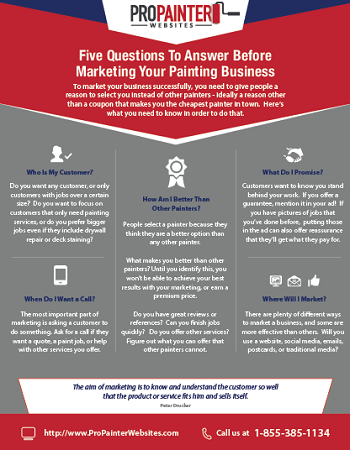Discover The Influence Of Seasonal Elements On The Efficiency Of Industrial External Painting And Determine The Ideal Times To Achieve Long-Lasting Results For Your Task
Discover The Influence Of Seasonal Elements On The Efficiency Of Industrial External Painting And Determine The Ideal Times To Achieve Long-Lasting Results For Your Task
Blog Article
Article Writer-Korsholm Chaney
When you're planning an industrial external painting job, seasonal aspects can make or break your outcomes. You'll wish to take into consideration just how temperature level and moisture effect paint application and drying out times. Choosing the best season can guarantee your paint adheres appropriately and lasts much longer. However which seasons are genuinely the most effective for this sort of work? Let's explore the key elements that can impact your job's success.
The Impact of Temperature on Paint Application
When you're planning a commercial exterior paint job, the temperature level can dramatically impact just how well the paint adheres and dries.
Preferably, you wish to repaint when temperature levels vary between 50 ° F and 85 ° F. If it's as well cold, the paint may not treat properly, leading to concerns like peeling or breaking.
On the other hand, if it's too hot, the paint can dry out also rapidly, preventing appropriate bond and leading to an uneven coating.
You should also think about the moment of day; early morning or late afternoon supplies cooler temperature levels, which can be much more favorable.
Constantly inspect the manufacturer's suggestions for the details paint you're using, as they typically supply advice on the perfect temperature variety for optimum outcomes.
Moisture and Its Result on Drying Times
Temperature isn't the only ecological aspect that affects your commercial external paint project; moisture plays a considerable role too. best painter near me can slow down drying times drastically, affecting the total top quality of your paint task.
When the air is saturated with dampness, the paint takes longer to cure, which can bring about issues like bad attachment and a greater threat of mildew development. If you're painting on an especially damp day, be prepared for extended wait times in between layers.
should i paint ceiling and walls same color to keep an eye on local weather conditions and plan appropriately. Ideally, go for moisture levels between 40% and 70% for ideal drying.
Maintaining these factors in mind ensures your job stays on track and supplies a lasting coating.
Best Seasons for Commercial Outside Painting Projects
What's the best season for your industrial outside painting jobs?
Spring and very early autumn are typically your best bets. Throughout these periods, temperatures are mild, and moisture levels are typically lower, creating optimal problems for paint application and drying out.
Stay clear of summer's intense heat, which can cause paint to completely dry also promptly, bring about bad adhesion and coating. In a similar way, winter's chilly temperature levels can hinder proper drying out and treating, running the risk of the longevity of your paint work.
Go for days with temperature levels between 50 ° F and 85 ° F for optimal results. Remember to examine the local weather report for rain, as wet conditions can spoil your project.
Preparation around these factors ensures your painting task runs efficiently and lasts longer.
Conclusion
In conclusion, planning your commercial external paint projects around seasonal factors to consider can make a significant difference in the end result. By organizing job throughout the excellent temperature levels and moisture degrees, you'll ensure far better adhesion and drying times. Keep in mind to keep an eye on neighborhood weather report and pick the correct time of year-- springtime and early loss are your best choices. Taking these steps will certainly assist you accomplish a resilient and professional finish that lasts.
